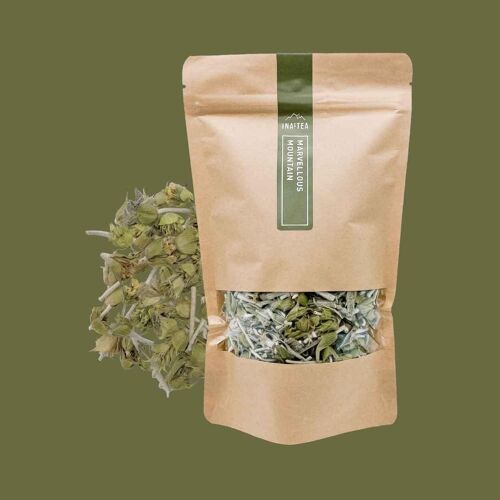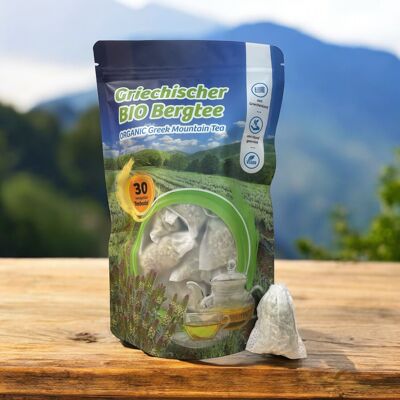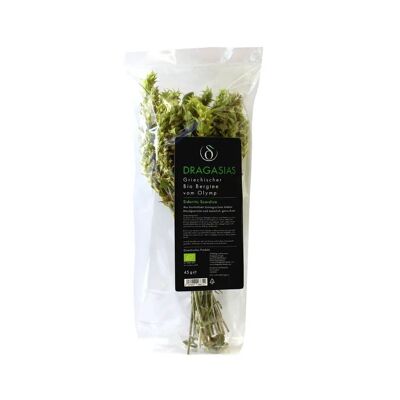


Our taste guarantee: 100% satisfaction - or your money back. Content: 50g for approx. 50 cups of Çaj jugu - tea from the south. This is what this tea is called in Albania. In the south of the country, in the mountains on the border with Greece, the tea is grown by small farming families and harvested by hand. We also know it as Greek mountain tea. On cold winter days, the tea is drunk to warm up or in summer it is enjoyed with lemon and honey as a refreshing iced tea. INGREDIENTS Sideritis Syriaca - Country of origin: Albania PREPARATION Pour 1-2 teaspoons per cup of boiling water, let it steep for 5 minutes and enjoy! The tea is so intense that you can brew it several times. Vary the brewing time according to your taste - milder or more intense. For refreshing iced tea: Pour 4-6 teaspoons into 1L of boiling water and let it steep for 10 minutes. Add 2 tablespoons of honey or maple syrup and stir well. When the tea has cooled, add the juice of 1/2 lemon. Finally, add ice cubes and the slices from the other half of the lemon. So you have a healthy and refreshing drink for the warm summer days. TASTE Mild honey note, soft, reminiscent of verbena CURIOUS? We send out free 1g sample packs. If you would like to try our delicious tea for yourself, just write us a short message with your address here. Already known and used in ancient times Whether it is Greek mountain tea or Albanian mountain tea, the name Sideritis appears in both. Sideritis, so-called jointed herbs, belong to the plant family of the Lamiaceae and are found in approx. Divided into 140 subspecies. They are found mainly in southwestern Albania, northeastern Greece, the southern regions of Bulgaria, Macedonia and the European part of Türkiye. The subspecies differ in appearance and size and have a second, descriptive term such as Sideritis Scardica, Sideritis Syriaca, Sideritis Clandestina or Sideritis Raeseri. The name Sideritis dates back to ancient times and is derived from the Greek word “sideros” for “iron”. The Greek physician Pedanios Dioscorides mentioned it as early as the 1st century. In the 18th century, he mentioned several plants with the name Sideritis in his Materia Medica and recommended, for example, treating injured soldiers with the plant. Once almost extinct, now available in organic quality In Greece, Sideritis Scadica is mainly used for the famous Greek mountain tea. After the plant had almost become extinct there, the Sideritis is now cultivated in organic quality at altitudes between 1000 and 2000 meters. The plant reaches a height of up to 40 cm and can withstand temperatures as low as -10°C. If not as a tea, then as an ornamental plant The Sideritis Syriaca, also called Syrian ginseng, can still be found in the almost untouched mountains of Albania. The striking, perennial plant with felty white leaves is quite undemanding and only requires a nutrient-poor but dry location in the sun. In the mountains, during the summer months, during the main flowering period, the flowers are traditionally collected by farmers and families living there. These are then hung up to dry in a dark, dry and well-ventilated place, cut and finally prepared for sale. But Sideritis Syriaca is not only processed into tea. In our latitudes it often appears as an ornamental plant in rock gardens and attracts numerous bees and butterflies.









